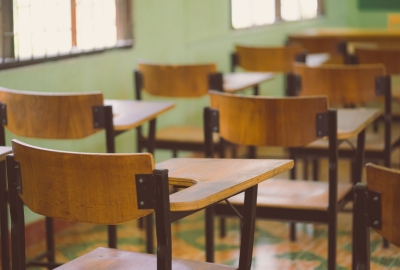
From Columbus to Culturally Responsive-Sustaining Curriculum
by Megan Hester
November 2021
Beginning in Pre-K, my daughter came home every year in October with worksheets, crafts and coloring booklets celebrating Christopher Columbus as the brave hero who discovered America. White kids like her were a minority in her elementary school, which included hundreds of children from Mexico, Latin American and the Caribbean. All of these are places that experienced catastrophic devastation from the arrival of Columbus and the waves of colonization and genocide he initiated. The school also served many first generation immigrants from South Asian countries -- students whose families might know as much about early American history as I know about early Bangladeshi history, and who were now ingesting this lie about Columbus’ heroism as god’s truth.
In the several decades I’ve been working with NYC public schools, I’ve heard versions of this story hundreds of times, in every borough, neighborhood and grade level. I’ve talked to students who never had a Black teacher in an academic class until college; students who read their first Latinx author in high school; students at schools where 3 out of 4 kids were Dominican, and were never taught a single lesson related to the Dominican Republic; students at schools where administrators talked about cherishing diversity, but never asked students about their culture, heritage or family, or invited students to bring those rich aspects of themselves into the classroom. These experiences do active violence to students’ concept of themselves and their community, as well as to their sense of whether school is for them, cares about them, is relevant to them.
White children may never know they missed anything, which is also actively harmful. White students can graduate from many public schools without knowing that non-white people contributed anything significant to human history, literature, science, culture or politics. Immersed in curriculum by and about people who look like them, white kids miss out on what education scholar Rudine Sims Bishop calls an understanding of “their place as a member of just one group, as well as their connections to all other humans.” Bishop points out that this whitewashed education encourages an “exaggerated sense of their own importance and value in the world - a dangerous ethnocentrism.” The political battles playing out across the country today evidence what happens when children raised with that dangerous ethnocentrism become adults with power.
Concerned about the damage that traditional education was doing to their children, the NYC Coalition for Educational Justice (CEJ) launched a campaign in 2016 to push the NYC Department of Education to embrace culturally responsive-sustaining education in all aspects of education. They knew that culturally responsive curriculum and pedagogy has a long and strong track record of improving academic and social outcomes for students, and asked the NYU Metro Center how they could assess whether their children’s curriculum was biased. Finding no tools designed for parents and community members, the team at the Education Justice Research and Organizing Collaborative (EJ-ROC) created one: the Culturally Responsive-Sustaining Curriculum Scorecards for English Language Arts and STEAM subjects.
EJ-ROC worked with CEJ parents to analyze over a dozen curriculum and booklists that are widely used in NYC public schools, to determine to what extent the diversity of NYC schools and communities is reflected in the books students read in school. We found that while 84% of NYC public school students are Black, Latinx or Asian, 85% of the authors in the books they read are white. Specifically, the report Diverse City, White Curriculum found:
- Of 1,200 books from grades 3K-8th in commonly used NYC curricula, there are only 3 Middle Eastern authors, 15 Native American authors, 47 Latinx authors, 8 Asian authors, 82 Black authors and 1,003 white authors
- In the widely used Scholastic elementary booklist, 90% of the authors are white
- In McGraw Hill’s Wonders middle school curriculum 100% of the books utilized are written by White authors
- Of the 42 authors in NYC Mayor de Blasio's widely touted Pre-K for All curriculum, there are zero Black, zero Native American and zero Middle Eastern authors. There is 1 Latinx and 1 Asian author, and 40 white authors.
This cultural gap between students and their curriculum they learn contributes to school climates that are hostile and harmful to the social-emotional wellbeing and academic development of students of color as well as white students. And these disparities in curriculum representation can be easily addressed, because three are hundreds of books by and about people of color published every year. In 2020 alone, the Cooperative Children’s Book Center reports that 943 children's books were published by authors of color, and 991about people of color. Over the last decade, there are literally thousands of books that schools can choose from as they select excellent literature for students to read.
As a result of CEJ’s research and organizing, this year the NYC Department of Education (DOE) invested $200 million in developing the Universal Mosaic Curriculum, a new, culturally responsive-sustaining K-12 curriculum for English Language Arts and Math. They’ve committed to develop it in collaboration with families, students, educators and community members, which is essential to a truly culturally responsive curriculum. If the DOE fulfills their commitment, today’s Pre-K students will not have those same old stories to tell about never seeing themselves reflected and respected in curriculum, or about learning untrue histories that erase their culture and people. With continued advocacy from families and communities, this next generation of students may graduate NYC public schools with a fuller, truer understanding of themselves and their increasingly multicultural world.


